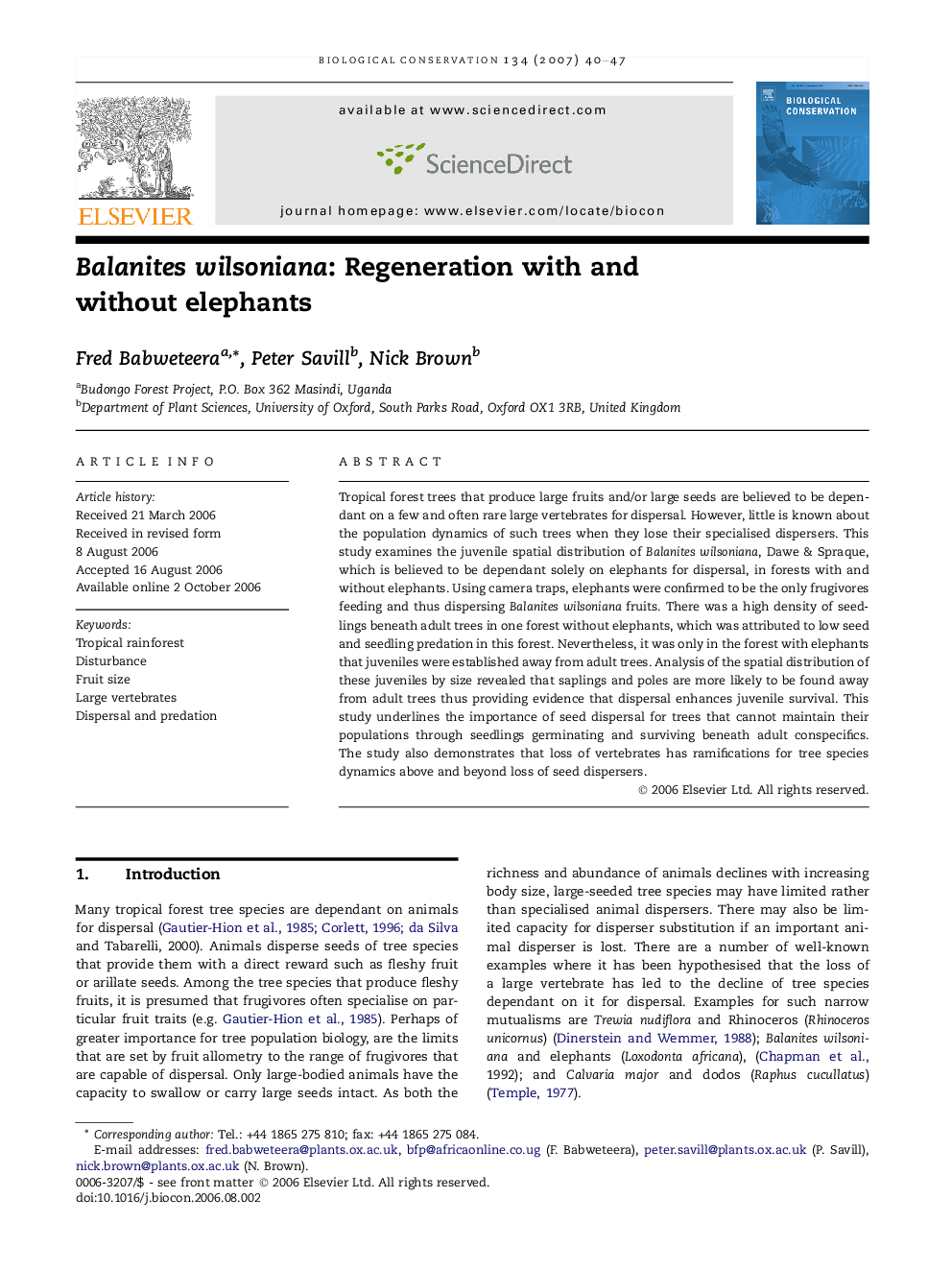| Article ID | Journal | Published Year | Pages | File Type |
|---|---|---|---|---|
| 4387317 | Biological Conservation | 2007 | 8 Pages |
Tropical forest trees that produce large fruits and/or large seeds are believed to be dependant on a few and often rare large vertebrates for dispersal. However, little is known about the population dynamics of such trees when they lose their specialised dispersers. This study examines the juvenile spatial distribution of Balanites wilsoniana, Dawe & Spraque, which is believed to be dependant solely on elephants for dispersal, in forests with and without elephants. Using camera traps, elephants were confirmed to be the only frugivores feeding and thus dispersing Balanites wilsoniana fruits. There was a high density of seedlings beneath adult trees in one forest without elephants, which was attributed to low seed and seedling predation in this forest. Nevertheless, it was only in the forest with elephants that juveniles were established away from adult trees. Analysis of the spatial distribution of these juveniles by size revealed that saplings and poles are more likely to be found away from adult trees thus providing evidence that dispersal enhances juvenile survival. This study underlines the importance of seed dispersal for trees that cannot maintain their populations through seedlings germinating and surviving beneath adult conspecifics. The study also demonstrates that loss of vertebrates has ramifications for tree species dynamics above and beyond loss of seed dispersers.
